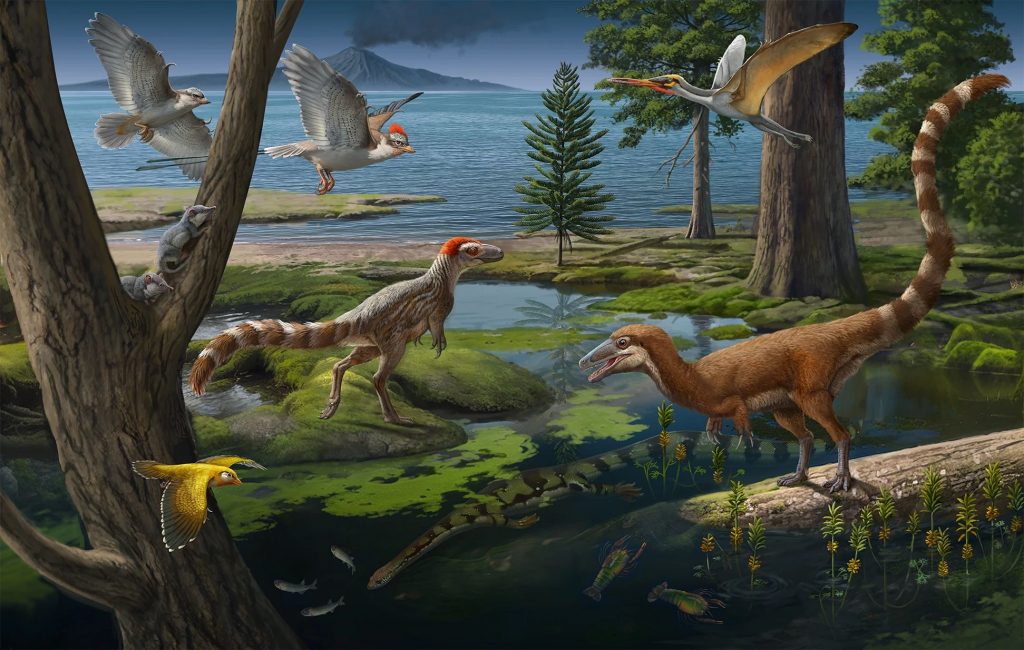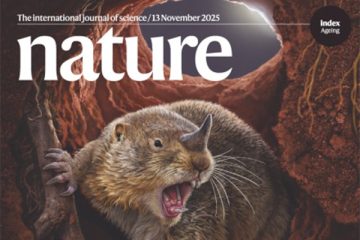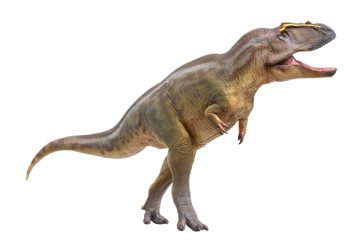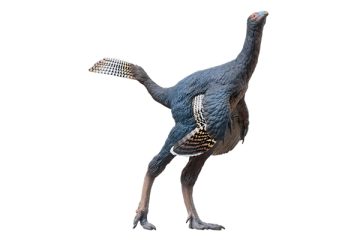
Recently, the international academic journal National Science Review published research findings online about two new sinosauropterygid species. Through an in-depth study of two well-preserved small theropod specimens from the Early Cretaceous Jehol Biota in western Liaoning, China, scientists named two new species: Sinosauropteryx lingyuanensis, a new species, and Huadanosaurus sinensis, a new genus and species, within the family Sinosauropterygidae. Drawing on the fossilized stomach contents of mammals preserved in the abdominal cavity of Huadanosaurus sinensis and the variations in skull morphology among different species of Sinosauropterygidae, the research team systematically elaborated, for the first time, the niche differentiation within this family and examined the potential connection with the destruction of the North China craton.
The published restoration iamges of Huadanosaurus sinensis and Sinosauropteryx lingyuanensis are illustrated by ZHAO Chuang.

Research Team: The first author of the study is Dr. Qiu Rui, an Associate Researcher at the National History Museum of China (who received his Ph.D from the Institute of Vertebrate Paleontology and Paleoanthropology, Chinese Academy of Sciences). The corresponding authors are Researcher Wang Xiaolin and Researcher Zhou Zhonghe. Other contributors include Associate Researcher Jiang Shunxing from the Institute of Vertebrate Paleontology and Paleoanthropology, Chinese Academy of Sciences, and Researcher Meng Jin from the American Museum of Natural History.
Article link: Two new compsognathid-like theropods show diversified predation strategies in theropod dinosaurs


